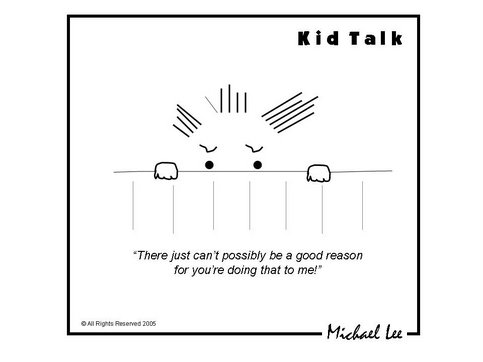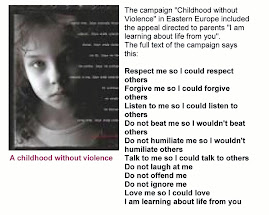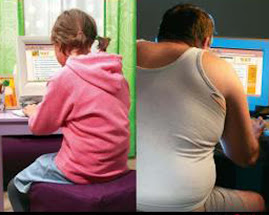

Wednesday, 11 April 2007
2006 12: Do sexy clothes land women in trouble?
The Sun online. Speak Up! Thu, 21 Dec 2006
The Kota Baru Municipal Council's (MPKB) move to impose a RM500 fine on retail workers who are "dressed indecently" drew a lot of attention lately. At the heart of the issue is the debate about whether indecent attire actually invites undesirable behaviour from men, especially sexual crimes.
From women's rights activists to government officials and the retail workers themselves, people from every corner of Malaysia are seemingly opposed to the idea, at least that is what the mainstream media want us to believe. After all, they say that it is utterly preposterous to link sexy attire with incidents of rape and that women should completely absolve themselves if they fall victim to it.
In my humble opinion, these so-called popular opinions are based mainly on irrational emotions, strong personal biases and delusions of gender inequality. There are no statistics or empirical evidence provided, no research studies or scientific papers quoted, and no formal reasoning applied whatsoever. But that is exactly what I will attempt to achieve here.
In this age of science and reason, random baseless comments do not quite cut it anymore:
Most rape cases are male-female where 1 in 6 women versus 1 in 33 men are victims of rape (US National Crime Victimisation Survey 2005)
80% of the victims are women under the age of 30 (Tjaden and Thoennes 2000)
Women aged 16-25 are three times more likely to be raped than other women (Bureau of Justice Statistics. Criminal Victimisation in the United States. US Department of Justice, Washington, DC 1991)
In descending order: In South Africa, a woman is raped every 20 seconds. In America, a woman is raped every two minutes. In Europe, a woman is raped every 10 minutes. In India, a woman is raped every 34 minutes. In Pakistan, a woman is raped every two hours. In Iraq, a woman is raped every 22 hours. In Teheran, Iran, a woman is raped every six days. (BBC, US Department of Justice, Council of Europe, Human Rights Commission of Pakistan, UN-OCHA) Rape statistics show young and sexually attractive females are raped far more often than older, less sexually attractive females (Warren Farrell, The Myth of Male Power)
A 1995 survey of almost 2,000 American teenagers found that: (a) almost half felt that rape was sometimes the victim's fault and (b) 40% agreed that girls who wear sexy clothes are asking to be raped (American Medical Association. Facts About Sexual Assault. Chicago, IL: American Medical Association, 1997)
There is a strong correlation between wearing revealing clothes and rape cases (Thornhill and Palmer, A Natural History of Rape)
As you may have gathered from the above facts, what this basically boils down to is the following:
Most rape victims are young women who fell prey to men.
Exceptional cases involving children and elderly are relatively very rare.
Rape cases are more common in Western and non-Muslim countries, and these do not include unreported cases.
Many youngsters, even in more liberal societies, believe that sometimes women are partly to blame for falling prey to sexual predators due to their provocative behaviour.
While it is impossible to prove the causal relationship between wearing revealing clothes and rape, there is a strong likelihood that it is one of the contributing factors.
The facts are figures that merely represent the tip of the iceberg. Feel free to conduct your own research and prove me wrong. The facts pretty much speak for themselves.
Even though the factors that contribute to sexual assault vary greatly (society, upbringing, psychological state, socio-biology, etc), there is very little doubt that donning an indecent attire is one of them. While it is virtually impossible to determine exactly why people perpetrate these heinous crimes, we should stop engaging ourselves in the constant denial that sexy clothes do not contribute to the rise of sexual crimes at all. Surely the point that no woman's conduct grants a man the right to sexually assault her can be made without encouraging women to overlook the role they themselves may be playing in compromising their safety.
This is not to say that provocatively-clothed women should be totally blamed, rather they should share part of the blame for enticing "high-risk" potential perpetrators, and they should start admitting this fact. And just because there are elder women and children involved does not mean that we should ignore the much bigger picture. It is like saying that carrying a lot of money on the city streets in plain sight does not at all entice potential criminals to commit robbery, since there are people who keep their money in the bank that are nevertheless robbed. The former can even be committed by an average junkie craving for the next "fix", while the latter is usually perpetrated by professional robbers who plan for days on end before executing it.
Likewise, there are different types of rapists with different fetishes and target victims. So why confuse the two?
Another fallacy is the notion that being able to wear sexy clothes liberates women from the shackles of gender inequality and the delusions under which they operate. Conservative Islamic societies are often blamed for "subjugating women" and denying them of their basic human rights. I cannot help but wonder whether the gender equality issues often cited by some parties include the freedom to compromise their safety by putting on an indecent attire and behaving provocatively, and later on absolving themselves completely and unconditionally after they are sexually assaulted? Does it also include being able to do all the things that men usually do, like playing physically aggressive contact sports, putting on a male attire and sporting a masculine hairstyle?
Well then, if they really insist on having "true gender equality", why is it that divorced wives paying for their husbands' alimony stays a rarity? Why are men still expected to pay thousands of ringgit in dowry on their wedding day, when some wealthy women are more than capable of achieving the same thing? Why then do women feel completely fine with men paying for dowry and alimony, and not so fine anymore when other things seem to side with men? Men and women have different roles to play, and they are both equally vital to the development of a society. God created the gender differences so that we can complement and learn from each other, not to divide us and render one gender superior to the other. We should value and celebrate the differences between us and not create unnecessary and counter-productive issues out of them.
Which brings me to my next point on the issue of Muslim women. While some issues often cited by women's rights activists have their merits, others are pure misconceptions about practices that are thought to be Islamic. Problems like honour killings and prohibiting women from furthering their studies or voting in elections essentially run counter to what Islam actually promotes. These are nothing but deviations from the true Islamic path.
On the other hand, if we go back 1,400 years to the advent of islam, we can see that it brought an ocean of change to women. Karen Armstrong, an eminent Western expert on Islam, makes the following comment: We must remember what life had been like for women in the pre-Islamic period when female infanticide was the norm and when women had no rights at all. Like slaves, women were treated as an inferior species, who had no legal existence. In such a primitive world, what Muhammad achieved for women was extraordinary. The very idea that a woman could be witness or could inherit anything at all in her own right was astonishing. In fact, during the Crusades some 1000 years ago, the Roman Catholic Church was totally appalled to witness how Muslims granted women (what seemed to the former as) too much power and too many rights. Women were free to gain knowledge, trade, own businesses, and even engage themselves in politics. Some of these basic rights were not granted to women of the Western hemisphere until relatively recently. If anything, Islam was women's first liberator and protector.
Which makes me wonder why certain quarters consider the imposition of headscarf a symbol of oppression on Muslim women? If anything, it is to protect and safeguard a woman's dignity from undesirable behaviors that may arise as a result of not covering up. As the facts and figures presented earlier indicate, Western nations, the so-called champions of women's rights, suffer the most from sexual crimes against women. You cannot help but wonder why their policy of "equality" and "transparency"(pun intended) results in a more dismal situation for women. You also cannot help but wonder why the Islamic policy of "subjugation" has resulted in much lower numbers of rape cases in Muslim countries.
In an ideal society where every individual is capable of self-discipline, it makes sense not to impose too many restrictions on the citizens. However, when matters spiral out of control, certain drastic measures have to be put in place to keep them in check. MPKB's latest move to crack down on indecent attire among retail workers is necessary in order to mitigate the risk of sexual crimes. The council does not wish to be seen as emboldening other decently-clothed women to do the same thing.
At any rate, the move should not be viewed in a negative light as the sole intention is to protect women. As the statistics have shown, it is the young, bubbly and attractive women who are in a much greater risk of falling prey to sexual predators, and Islamic laws may have just the answer to the worsening problem.
Safwan Kamarrudin
Subang Jaya
The Kota Baru Municipal Council's (MPKB) move to impose a RM500 fine on retail workers who are "dressed indecently" drew a lot of attention lately. At the heart of the issue is the debate about whether indecent attire actually invites undesirable behaviour from men, especially sexual crimes.
From women's rights activists to government officials and the retail workers themselves, people from every corner of Malaysia are seemingly opposed to the idea, at least that is what the mainstream media want us to believe. After all, they say that it is utterly preposterous to link sexy attire with incidents of rape and that women should completely absolve themselves if they fall victim to it.
In my humble opinion, these so-called popular opinions are based mainly on irrational emotions, strong personal biases and delusions of gender inequality. There are no statistics or empirical evidence provided, no research studies or scientific papers quoted, and no formal reasoning applied whatsoever. But that is exactly what I will attempt to achieve here.
In this age of science and reason, random baseless comments do not quite cut it anymore:
Most rape cases are male-female where 1 in 6 women versus 1 in 33 men are victims of rape (US National Crime Victimisation Survey 2005)
80% of the victims are women under the age of 30 (Tjaden and Thoennes 2000)
Women aged 16-25 are three times more likely to be raped than other women (Bureau of Justice Statistics. Criminal Victimisation in the United States. US Department of Justice, Washington, DC 1991)
In descending order: In South Africa, a woman is raped every 20 seconds. In America, a woman is raped every two minutes. In Europe, a woman is raped every 10 minutes. In India, a woman is raped every 34 minutes. In Pakistan, a woman is raped every two hours. In Iraq, a woman is raped every 22 hours. In Teheran, Iran, a woman is raped every six days. (BBC, US Department of Justice, Council of Europe, Human Rights Commission of Pakistan, UN-OCHA) Rape statistics show young and sexually attractive females are raped far more often than older, less sexually attractive females (Warren Farrell, The Myth of Male Power)
A 1995 survey of almost 2,000 American teenagers found that: (a) almost half felt that rape was sometimes the victim's fault and (b) 40% agreed that girls who wear sexy clothes are asking to be raped (American Medical Association. Facts About Sexual Assault. Chicago, IL: American Medical Association, 1997)
There is a strong correlation between wearing revealing clothes and rape cases (Thornhill and Palmer, A Natural History of Rape)
As you may have gathered from the above facts, what this basically boils down to is the following:
Most rape victims are young women who fell prey to men.
Exceptional cases involving children and elderly are relatively very rare.
Rape cases are more common in Western and non-Muslim countries, and these do not include unreported cases.
Many youngsters, even in more liberal societies, believe that sometimes women are partly to blame for falling prey to sexual predators due to their provocative behaviour.
While it is impossible to prove the causal relationship between wearing revealing clothes and rape, there is a strong likelihood that it is one of the contributing factors.
The facts are figures that merely represent the tip of the iceberg. Feel free to conduct your own research and prove me wrong. The facts pretty much speak for themselves.
Even though the factors that contribute to sexual assault vary greatly (society, upbringing, psychological state, socio-biology, etc), there is very little doubt that donning an indecent attire is one of them. While it is virtually impossible to determine exactly why people perpetrate these heinous crimes, we should stop engaging ourselves in the constant denial that sexy clothes do not contribute to the rise of sexual crimes at all. Surely the point that no woman's conduct grants a man the right to sexually assault her can be made without encouraging women to overlook the role they themselves may be playing in compromising their safety.
This is not to say that provocatively-clothed women should be totally blamed, rather they should share part of the blame for enticing "high-risk" potential perpetrators, and they should start admitting this fact. And just because there are elder women and children involved does not mean that we should ignore the much bigger picture. It is like saying that carrying a lot of money on the city streets in plain sight does not at all entice potential criminals to commit robbery, since there are people who keep their money in the bank that are nevertheless robbed. The former can even be committed by an average junkie craving for the next "fix", while the latter is usually perpetrated by professional robbers who plan for days on end before executing it.
Likewise, there are different types of rapists with different fetishes and target victims. So why confuse the two?
Another fallacy is the notion that being able to wear sexy clothes liberates women from the shackles of gender inequality and the delusions under which they operate. Conservative Islamic societies are often blamed for "subjugating women" and denying them of their basic human rights. I cannot help but wonder whether the gender equality issues often cited by some parties include the freedom to compromise their safety by putting on an indecent attire and behaving provocatively, and later on absolving themselves completely and unconditionally after they are sexually assaulted? Does it also include being able to do all the things that men usually do, like playing physically aggressive contact sports, putting on a male attire and sporting a masculine hairstyle?
Well then, if they really insist on having "true gender equality", why is it that divorced wives paying for their husbands' alimony stays a rarity? Why are men still expected to pay thousands of ringgit in dowry on their wedding day, when some wealthy women are more than capable of achieving the same thing? Why then do women feel completely fine with men paying for dowry and alimony, and not so fine anymore when other things seem to side with men? Men and women have different roles to play, and they are both equally vital to the development of a society. God created the gender differences so that we can complement and learn from each other, not to divide us and render one gender superior to the other. We should value and celebrate the differences between us and not create unnecessary and counter-productive issues out of them.
Which brings me to my next point on the issue of Muslim women. While some issues often cited by women's rights activists have their merits, others are pure misconceptions about practices that are thought to be Islamic. Problems like honour killings and prohibiting women from furthering their studies or voting in elections essentially run counter to what Islam actually promotes. These are nothing but deviations from the true Islamic path.
On the other hand, if we go back 1,400 years to the advent of islam, we can see that it brought an ocean of change to women. Karen Armstrong, an eminent Western expert on Islam, makes the following comment: We must remember what life had been like for women in the pre-Islamic period when female infanticide was the norm and when women had no rights at all. Like slaves, women were treated as an inferior species, who had no legal existence. In such a primitive world, what Muhammad achieved for women was extraordinary. The very idea that a woman could be witness or could inherit anything at all in her own right was astonishing. In fact, during the Crusades some 1000 years ago, the Roman Catholic Church was totally appalled to witness how Muslims granted women (what seemed to the former as) too much power and too many rights. Women were free to gain knowledge, trade, own businesses, and even engage themselves in politics. Some of these basic rights were not granted to women of the Western hemisphere until relatively recently. If anything, Islam was women's first liberator and protector.
Which makes me wonder why certain quarters consider the imposition of headscarf a symbol of oppression on Muslim women? If anything, it is to protect and safeguard a woman's dignity from undesirable behaviors that may arise as a result of not covering up. As the facts and figures presented earlier indicate, Western nations, the so-called champions of women's rights, suffer the most from sexual crimes against women. You cannot help but wonder why their policy of "equality" and "transparency"(pun intended) results in a more dismal situation for women. You also cannot help but wonder why the Islamic policy of "subjugation" has resulted in much lower numbers of rape cases in Muslim countries.
In an ideal society where every individual is capable of self-discipline, it makes sense not to impose too many restrictions on the citizens. However, when matters spiral out of control, certain drastic measures have to be put in place to keep them in check. MPKB's latest move to crack down on indecent attire among retail workers is necessary in order to mitigate the risk of sexual crimes. The council does not wish to be seen as emboldening other decently-clothed women to do the same thing.
At any rate, the move should not be viewed in a negative light as the sole intention is to protect women. As the statistics have shown, it is the young, bubbly and attractive women who are in a much greater risk of falling prey to sexual predators, and Islamic laws may have just the answer to the worsening problem.
Safwan Kamarrudin
Subang Jaya
Subscribe to:
Post Comments (Atom)



1 comment:
Very interesting post. I support any advocacy campaign that aims to promote women's rights. I live in a country that has a patriarchal tradition so women have faced a lot of unfair restrictions.
Post a Comment